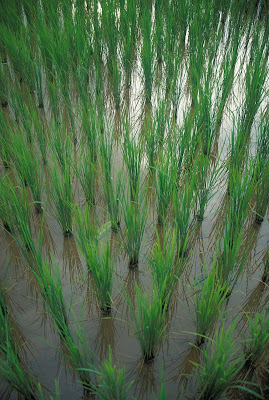
Also see
http://pankaj-atcrossroads.blogspot.com/2007/06/daram.html
 Monsoon clouds over the islands of the Mahatma Gandhi Marine National Park, Andaman Islands
Monsoon clouds over the islands of the Mahatma Gandhi Marine National Park, Andaman Islands River Aghanashini under an overcast sky as viewed from the crest of the Western Ghats,
River Aghanashini under an overcast sky as viewed from the crest of the Western Ghats, Paddy field, Uttar Kannada district, Karnataka
Paddy field, Uttar Kannada district, Karnataka Rain drops collect on a spider's web, Mt. Harriet National Park, Andaman Islands
Rain drops collect on a spider's web, Mt. Harriet National Park, Andaman Islands Rain from the window, Wandoor, Andaman Islands
Rain from the window, Wandoor, Andaman Islands| It’s June. The winds of the South West Monsoon bring with them water, hope and life. |

This monsoon is one and yet it is many at the same time.
When it hits the western coast of India, generally in the first week of June, the summer is just about tightening its grip on large parts of western and northern India. It could be pouring in the thickly forested mountains of the Western Ghats and we might have parallel reports of a heat wave and related deaths from other parts. By the time the pied crested cuckoo’s arrival heralds the coming of rain-bearing clouds to the scorching Gangetic plains, there is a good chance that the Brahmaputra is already in spate, flooding large parts of the North East and bringing death and destruction in its wake.
Annual eventThe monsoon has a character with many facets. It remains an event that is waited for when it’s not there, loved and enjoyed when it makes its appearance and even feared when it sets in and then refuses to relent. It’s varied and complex and reveals its processes and trajectories with difficulty, if it does at all. The rainforests depend on it to be rainforests, rivers depend on it to be rivers and its behaviour and idiosyncrasies decide the fate of a billion people and more.
In a season of rising inflation, rising oil and grain prices, and rising food and water scarcity it seems like a humbling moment (at least it should be) when the all powerful ministers and technocrats point to the met office’s prediction of a normal rainfall to promise the nation that things will be better soon. It is to regain a moment of sanity to realise that it is the most basic things that we take for granted the most; that the GDP and all its paraphernalia is after all, a child of something so fundamental that there is no option but to acknowledge it; that without rains, without water and food for its people dreams of being a superpower will remain dreams and no more.
Summer this year appears to have been relatively better than others in the recent past, but even then, large parts of the subcontinent, be it the region of Bundelkhand in Madhya Pradesh, the tribal tracts of eastern India, the coasts of Andhra or the forests of Uttarakhand and Himachal Pradesh — these have all, in the last few weeks, experienced severe stress and acute water shortages. The Gujjars are agitating (and dying) in hot and dusty Rajasthan to meet their political goals; families don’t want to marry their daughters into Bundelkhand because of the severe water shortage; women from many villages in Andhra Pradesh’s Srikakulam district are forced to walk many kilometres daily to get a pot of water; fires are raging across forests in the Shivaliks; and elephants and other wild animals in Orissa moving out of forests in search of water are falling prey to the poachers… the summer of 2008 has had its share of conflicts and depressing stories. There will be many more and one could go on.
Is there a way?In times such as these there appears to be little that one can do. Except, of course, hope that time passes quickly and the rains oblige. Water is too basic a need and therefore, becomes too powerful an emotional issue. This is an emotion that, we all know, is exploited all the time for all kinds of political, financial and personal agendas.
The agendas are met, the genuine needs of water, often, are not. Proof of this reality is not really needed, but if it was, what would be a better example than the grandiose scheme of river linking that dangles like a sword upon the people and the landscape of this country. Few have an idea of what the impact will be on agriculture, hydrology, the people and the ecology. It is doubtful, though, that these will ever be considered.
For the moment, however, we will let it be. For the moment, we’ll make a departure. As life pours down in large parts of the country, the conflicts, the fear, and the anger can be hid behind misty curtains. The rains are here. The multiple hues of the brown, barren landscapes are turning into multiple rejuvenations. The green is beginning to sprout, there is a freshness in the air and in it all, the promise of life. This is the season that celebrates life, and so be it!
And grandmas’ advice to carry the umbrella the day the met office says the skies will be clear is best heeded and respected. Science and technology has not yet taken us there.

 KERALA
KERALA
 MAHARASHTRA
MAHARASHTRA SC allows eviction from Sanjay Gandhi NP
SC allows eviction from Sanjay Gandhi NP
 Villagers around Bhitarkanika NP allegedly harassed
Villagers around Bhitarkanika NP allegedly harassed Now, weekly off for domestic elephants in Corbett
Now, weekly off for domestic elephants in Corbett
 OPPORTUNITIES
OPPORTUNITIES